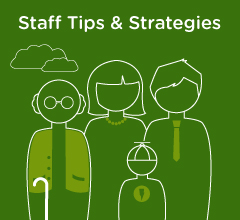Cyberbullying and Your Child – What You Need to Know

Author:
Heidi Cohen, LCSW-C, Child and Family Services
Technology today is often our children’s life line to social interactions. Social networking can be a wonderful tool for individuals to share stories, connect with friends and network. However, social networking can also lead to serious issues such as cyberbullying.
Cyberbullying is a growing threat to our children today. Cyberbullying is defined as bullying through the internet. Like bullying, cyberbullying can start as a rumor, or a photo and can easily spiral out of control. Cyberbullying is defined as “involving the use of information and communication technologies to support deliberate, repeated and hostile behavior by an individual or group, that is intended to harm others”. Belsey, Bill (December 2005). Cyberbullying: An Emerging Threat to the Always On Generation.
Different forms of cyberbullying include but are not limited to: Flaming- online fights using electronic messages with angry and vulgar language, Harassment- repeated nasty and mean messages, Denigration- gossip and spreading rumors, Outing – sharing someone’s secrets and Stalking- intense harassment that include threats and creates significant fear.
Statistics show that about 1/3 of online teens, ages 12-17 are being or have been cyberbullied. (Netsmartz.org) Signs that a child or teen may be the victim of cyberbullying include: avoiding the computer or electronic device, added stress when the child receives a text or e-mail, depression, shame, social isolation, anxiety and suicide consideration. It is critical that parents know their child’s “normal” behavior so that they can identify things that seem out of the ordinary.
Parenting a wired child can be difficult, especially if you didn’t grow up with the same technology. Our children today are very technologically savvy. They are seldom without their cell phones, iPads, computers etc. It is important for parents to maintain an open dialogue with their children about internet safety. Parents and their children should often discuss the risks and benefits of online friendships.
Children need to know that they should never post any personal identifiable information. They should be encouraged to only post information that they would be comfortable or proud sharing with their parents or grandparents.
Parents should become integrally involved in their child’s online activities. Talk to your child about what to and what not to post. It is important to check out the sites that the children are using. Some social media sites include Facebook, Twitter, Yik Yak and Instagram. If a child has an account on any social media site, you should too! Parents should set conditions that their child “friends” them with unrestricted access. Then, parents should constantly monitor their child’s interaction on the internet and the content of what’s being posted.
Studies have shown that teens and children today are more likely to share a secret over the computer or on a cell phone, then telling it out loud. They feel safer using written messages rather than in person communication. As a matter of fact, 62% of online teens say that they would do or say things online that they would not want their parents to know about (The Antidrug.com, 9/29/10).
Be aware of the warning signs that your child may be being cyberbullied. If your child has been cyberbullied there are things you can do. Save all the e-mails, texts and photos, talk to the school and call the police. Instruct your child to block bullies, delete their account (and open a new one) or change their phone number. Finally, report the cyberbullying to www.cybertipline.com.
Resources:
www.netsmartz.org
www.stopcyberbullying.org
www.Safetyweb.com
